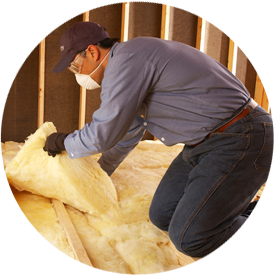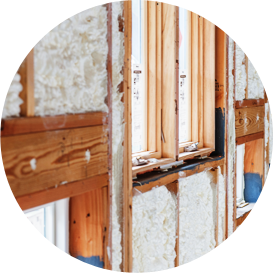Are you considering insulating your home? You may be unclear about insulation’s impact on the environment and your energy bills. Here, we’ll share some stats to help you learn a little more about insulation.
Insulation Often Contains Recycled Content
One primary purpose of installing insulation is to reduce your home’s environmental impact by decreasing your energy use. But what about the environmental friendliness of the material itself? Many types of insulation actually contain recycled content, making them eco-friendly. Here are some examples:
- Mineral wool contains an average of 75 percent post-industrial recycled content. It also doesn’t require the use of chemicals to make it fire resistant.
- Fiberglass insulation is made from at least 20 to 30 percent recycled glass content.
Insulation Reduces Home Energy Consumption
Of all the different ways to save energy—such as turning off the lights when you leave a room, unplugging unused electronic devices and adjusting the thermostat setting— the most effective option is to install insulation! Here are some insulation statistics to prove it:
- On average, heating and cooling account for 54 percent of a home’s annual utility bills.
- Uninsulated floors waste up to 10 percent of your home’s heating bills.

- Insulating the basement walls or slab foundation can reduce heating costs by 10 to 20 percent, especially in cold climates.
- You can reduce heat loss in your home by 67 percent by installing wall insulation where there previously was none.
- Because of these impressive savings, the cost of installing insulation pays for itself in about five to six years.
- You can decrease heating and cooling costs by up to 40 percent by installing adequate attic insulation.

Insulation Effectiveness Varies
When you install insulation, the goal is to reach a certain level of thermal resistance, or R-value, to keep warm air in during the winter and out during the summer. To determine the effectiveness of an insulating product, just look at the label. There, you’ll find the R-value. The higher this number is, the better the material is at slowing hot air attempting to pass through it. Here are some insulation statistics to consider:
- Fiberglass batts typically range in R-value from R-2.75 to R-5.25 per inch.
- Cellulose inhibits airflow with an R-value of R-3.6 to R-3.8 per inch.
- Cotton batts are available with an R-value of about R-3.4 per inch.
- Polyurethane spray foam ranges from about R-3.6 per inch for low-density, open-cell foam to R-5.5 to R-6.5 per inch for high-density, closed-cell foam.
Insulation Contractors Serving the Nashville, TN Area
With these insulation statistics in mind, it’s clear that every building needs an adequate layer of the right material. Contact the insulation contractors at Installed Building Products of Nashville today, and we’ll arrange an inspection for your Nashville, Tennessee home to determine if you could benefit from adding more insulation!
Resources:




